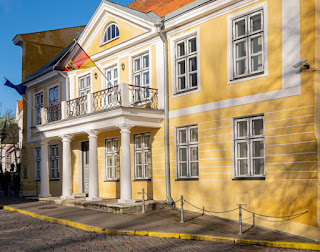Gothic: Although occupied from 11th Century, the battlement that remains today dates back to the 14th century. There are many fine gothic buildings in Tallinn including the Town Hall and the Lutheran Church of the Holy Spirit. Tallinn Old Town has been entered in the UNESCO World Heritage List as a well-preserved medieval town.
Renaissance: Renaissance-style architecture manifested itself most frequently in the ornaments of houses, especially in carved details and decorative paintings. The House of the Blackheads (1597) located at 26 Pikk street is a fine example


Baroque: In the beginning of the 17th century, Baroque reached Tallinn. One of the best examples is Kadriorg Palace (1718)

Classicism: In the era of classicism (from the end of the 18th century to the beginning of the 19th century), many buildings were erected in the upper town, whereas buildings were being rebuilt in the lower town. In the course of rebuilding, many of the medieval facades were given a modern classicist exterior eg. the von Rosen Palace (1670s, 28 Pikk street),

Historicism: In the middle of 19th century historicism and eclecticism came into vogue.
Alexander Nevsky Cathedral (1900, 10 Lossi plats) is an example of the Pseudo-Russian style.

The Reichmann house (1909, 21/23 Pikk street) is the most interesting example of Neo-Mannerism.



Art Nouveau: In the 20th century, Tallinn welcomed an architectural style that was widespread in Europe – Art Nouveau, including a sub-style known as Riga Art Nouveau. It is very flamboyant with a great number of masks and ornaments. An excellent example of this sub-style is J. Rosenbaum’s Draakoni Gallery (1910, 18 Pikk street).


1930s - 1960s
The architecture of 1930s Tallinn is a mixture of traditionalism, functionalism, Art Déco and Scandinavian classicism. It is clearly recognisable and respectable, primarily due to its rectangular shapes and the popular brown or greyish colour anthracite grout popular at the time. Example: Tallinn Art Hall (1934), 6 Vabaduse square.













































